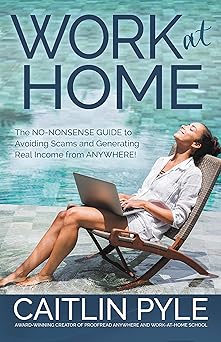
InboxDollars is a long-standing online rewards platform that allows users to earn money by completing surveys, watching videos, reading emails, and participating in other small online tasks. Founded in 2000, the company has built a reputation as one of the more established “get-paid-to” sites. However, as with all survey programs, the real question is whether it’s worth your time and effort. This review takes a detailed look at how InboxDollars surveys work, what users can expect, and how it compares to other similar platforms.
InboxDollars operates on a straightforward premise: users sign up for free, complete surveys or offers, and get paid cash for their participation. Unlike some sites that pay in points, InboxDollars pays in actual dollar amounts, which makes it easier to track your earnings. Once your account reaches the payout threshold of $15, you can request payment via PayPal, a prepaid Visa card, or a gift card from popular retailers.
The surveys are the main attraction for most users. After signing up, you’ll be asked to complete a short profile that helps the system match you to relevant surveys. Once that’s done, you’ll see available surveys in your dashboard. Each survey lists an estimated completion time and reward amount, so you know upfront how much you’ll earn. The pay rate varies widely, usually between $0.25 and $5 per survey, depending on length and subject matter. Occasionally, higher-paying surveys can appear, especially if they target specific demographics or industries.
However, one of the most common frustrations users experience with InboxDollars—and many other survey platforms—is disqualification. After answering several preliminary questions, you may find out that you don’t qualify for a survey, meaning you won’t earn the full reward. InboxDollars does offer a small bonus, usually a few cents, for these disqualifications, but it can still feel discouraging if it happens frequently. This is not unique to InboxDollars, but it is something users should expect.
The payout process is reliable, which is one of InboxDollars’ strengths. The company has a solid history of paying its members on time, which adds to its credibility. While some users dislike the $15 minimum withdrawal limit, it’s still lower than many competing sites that require $20 or more. The ability to choose from cash or gift cards is also a nice feature that adds flexibility.
InboxDollars also offers other ways to earn, including reading promotional emails, signing up for trial offers, shopping online through their portal, and watching videos. While these activities usually pay only a few cents each, they can add up over time. For people who want to stay active on the platform between surveys, these small tasks offer a steady trickle of earnings.
The user interface is clean and easy to use, though it does contain a fair number of ads and promotional offers. Some users might find the website a bit cluttered, especially when compared to newer survey platforms with more minimalist designs. However, once you learn your way around, navigation becomes straightforward. The mobile app also mirrors the website well, giving users flexibility to complete surveys on the go.
Customer support is generally adequate. InboxDollars provides a help center with frequently asked questions, and members can submit a ticket if they need further assistance. Response times vary, but most reports suggest that issues are resolved in a reasonable amount of time.
When it comes to earning potential, it’s important to be realistic. InboxDollars will not replace a full-time job or provide a major source of income. Most users earn anywhere from a few dollars to around $30 per month, depending on how much time they invest and how many surveys they qualify for. The key is to treat it as a small side income opportunity rather than a primary income source.
The main advantages of InboxDollars are its reliability, wide range of earning options, and cash-based payment system. Its biggest downsides are the frequent survey disqualifications, lower earning rates for time spent, and occasional promotional clutter. Still, for people who enjoy taking surveys in their spare time and want a legitimate platform that pays real money, InboxDollars remains a solid option.
In summary, InboxDollars surveys offer a legitimate, user-friendly way to earn extra money online. It’s best suited for those who have some free time and want to turn it into small cash rewards rather than those seeking significant income. With patience and consistency, you can build up your balance and enjoy the satisfaction of getting paid for simple online activities.

